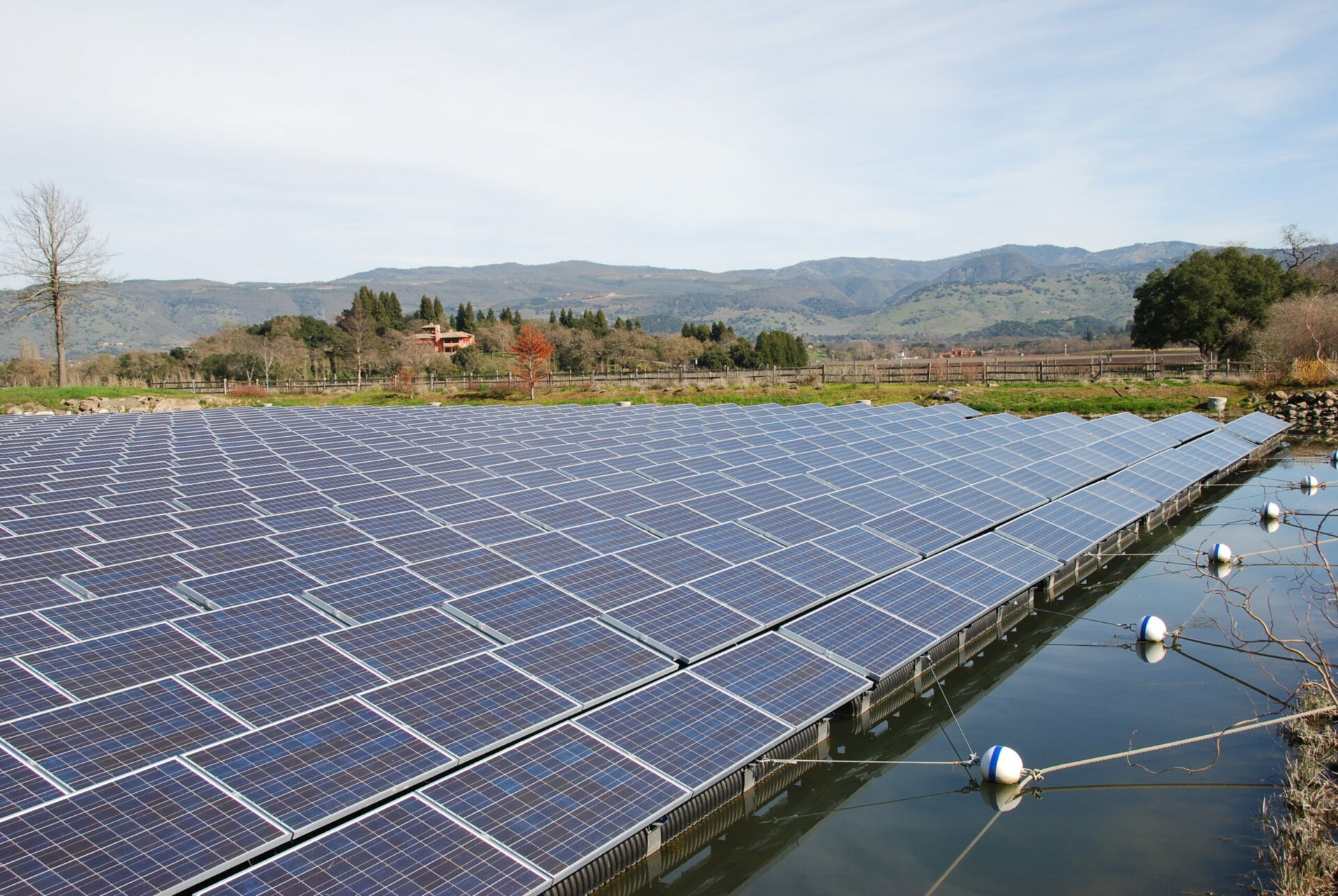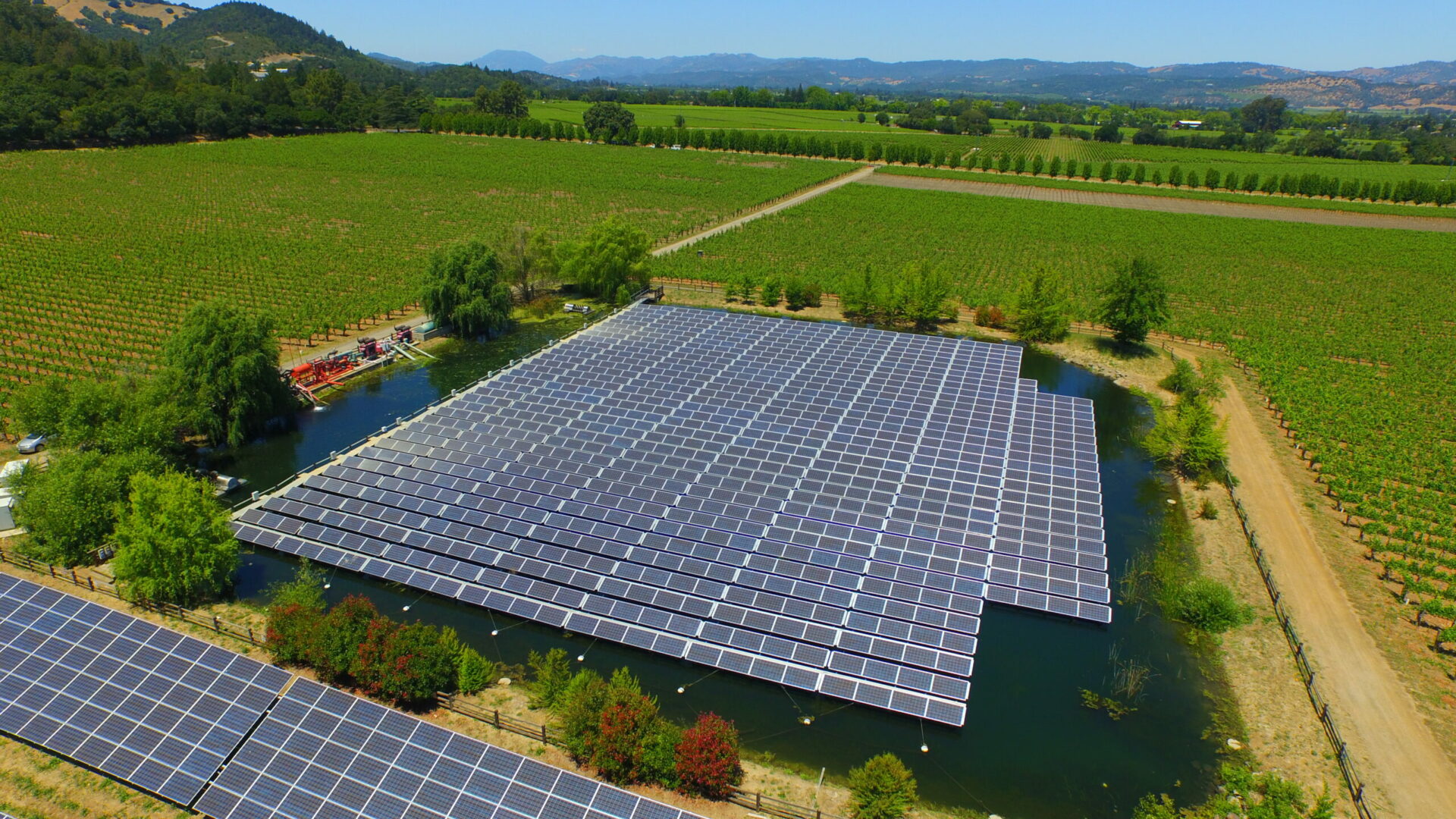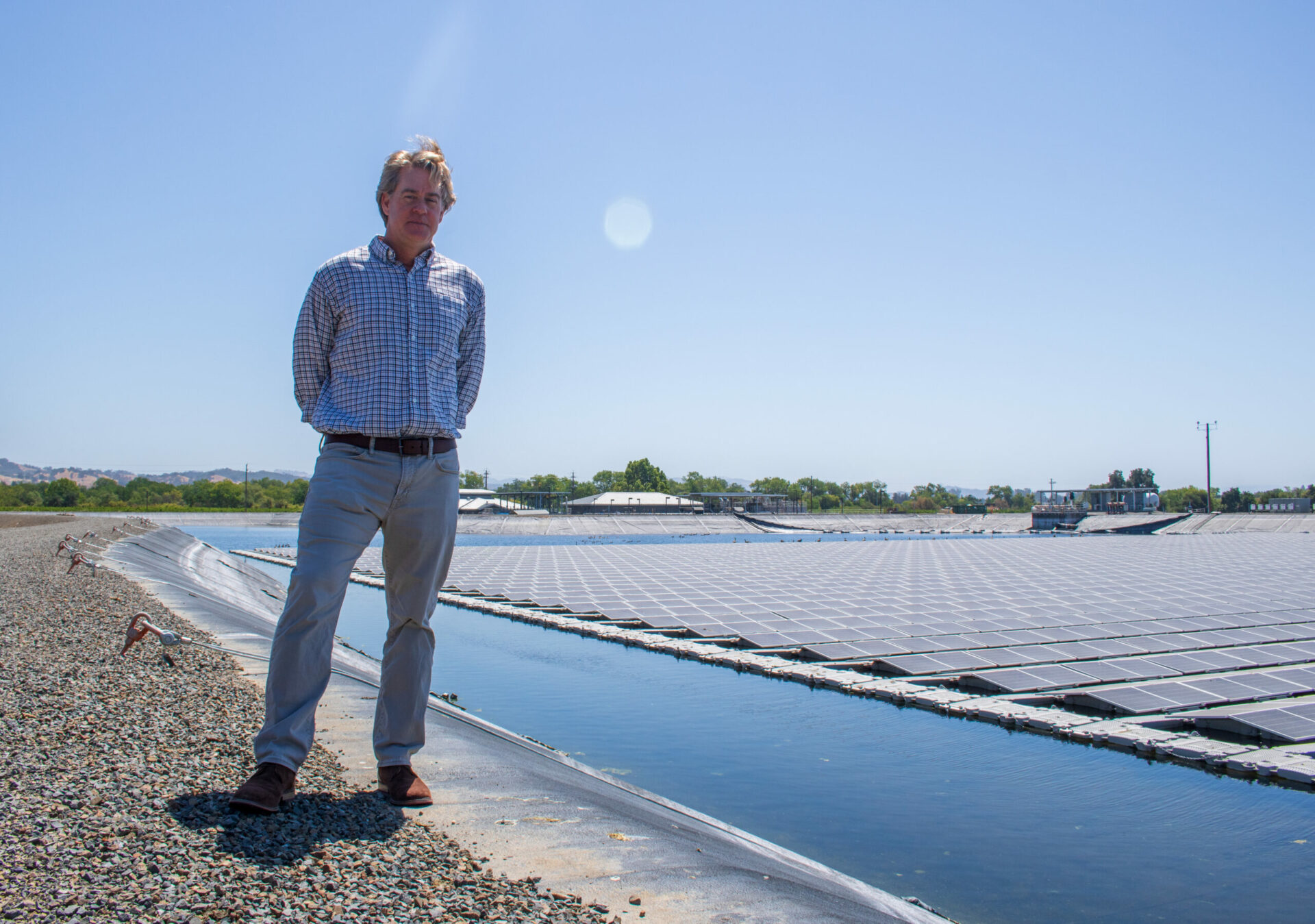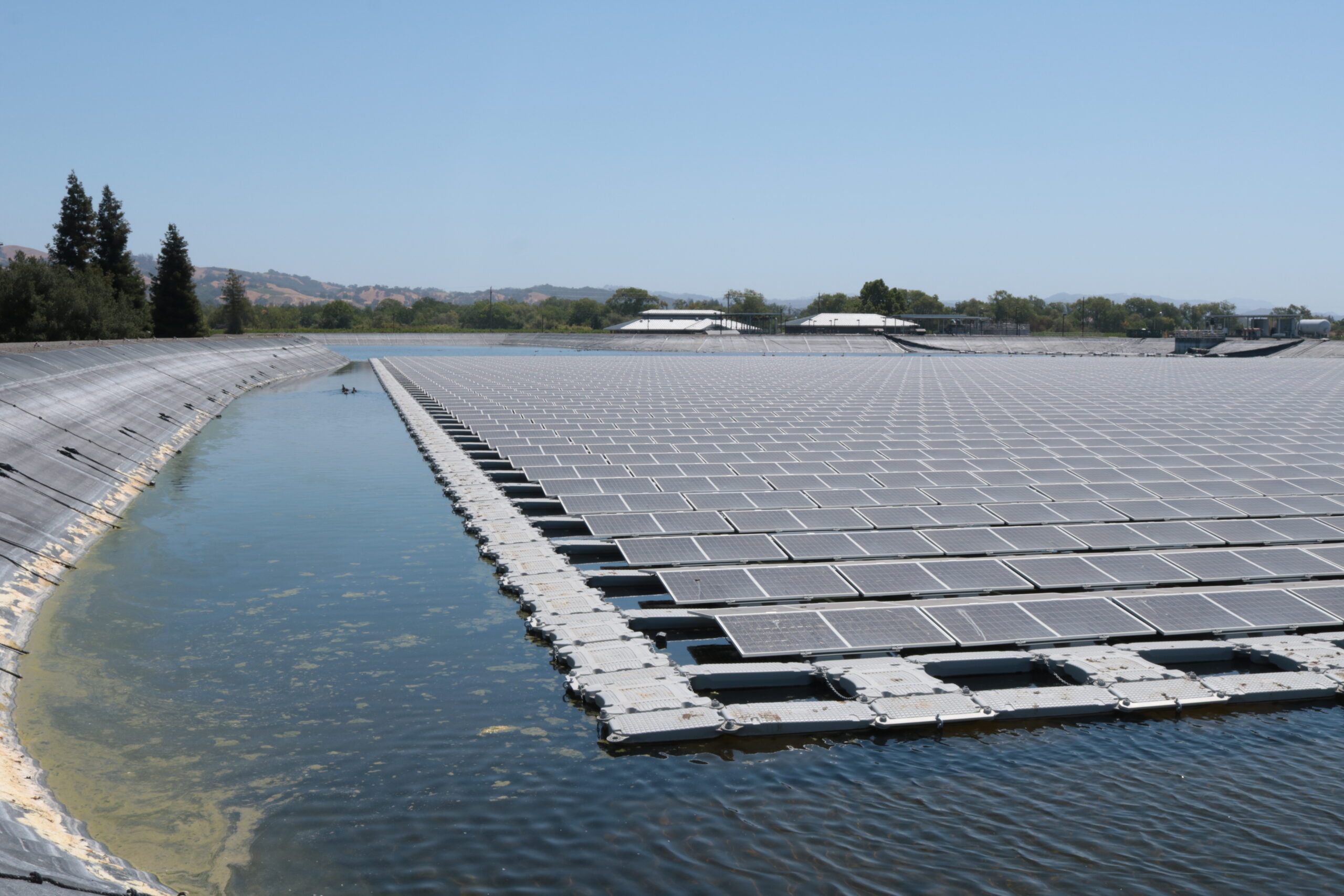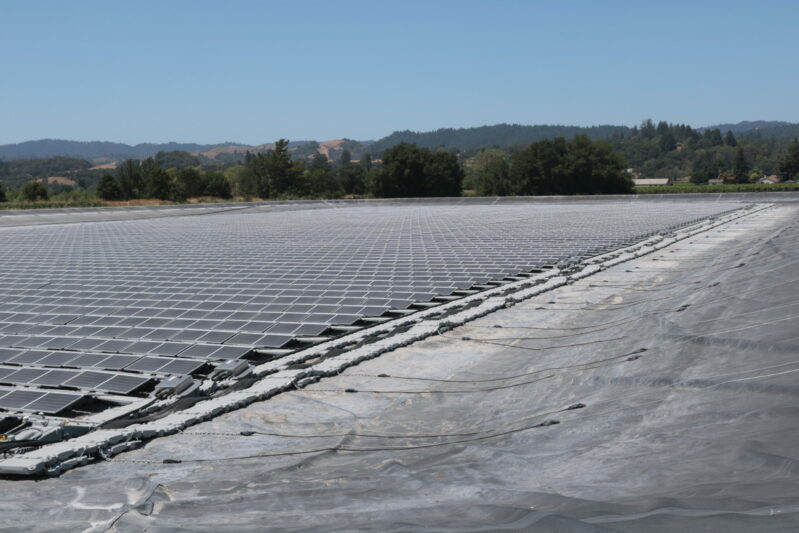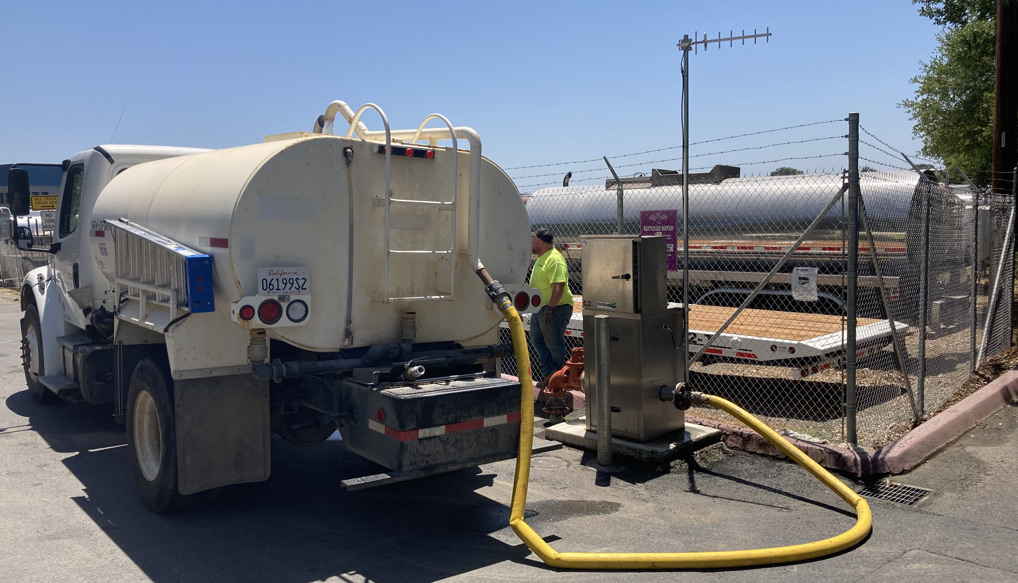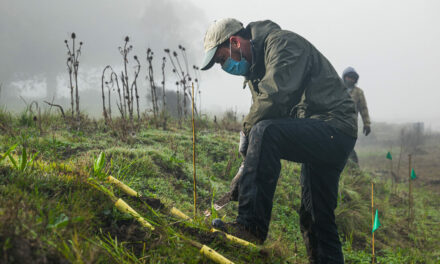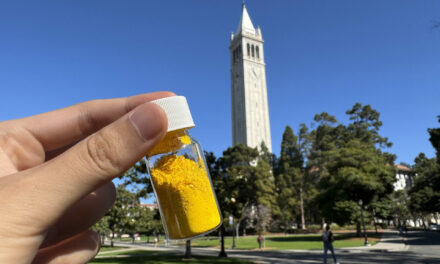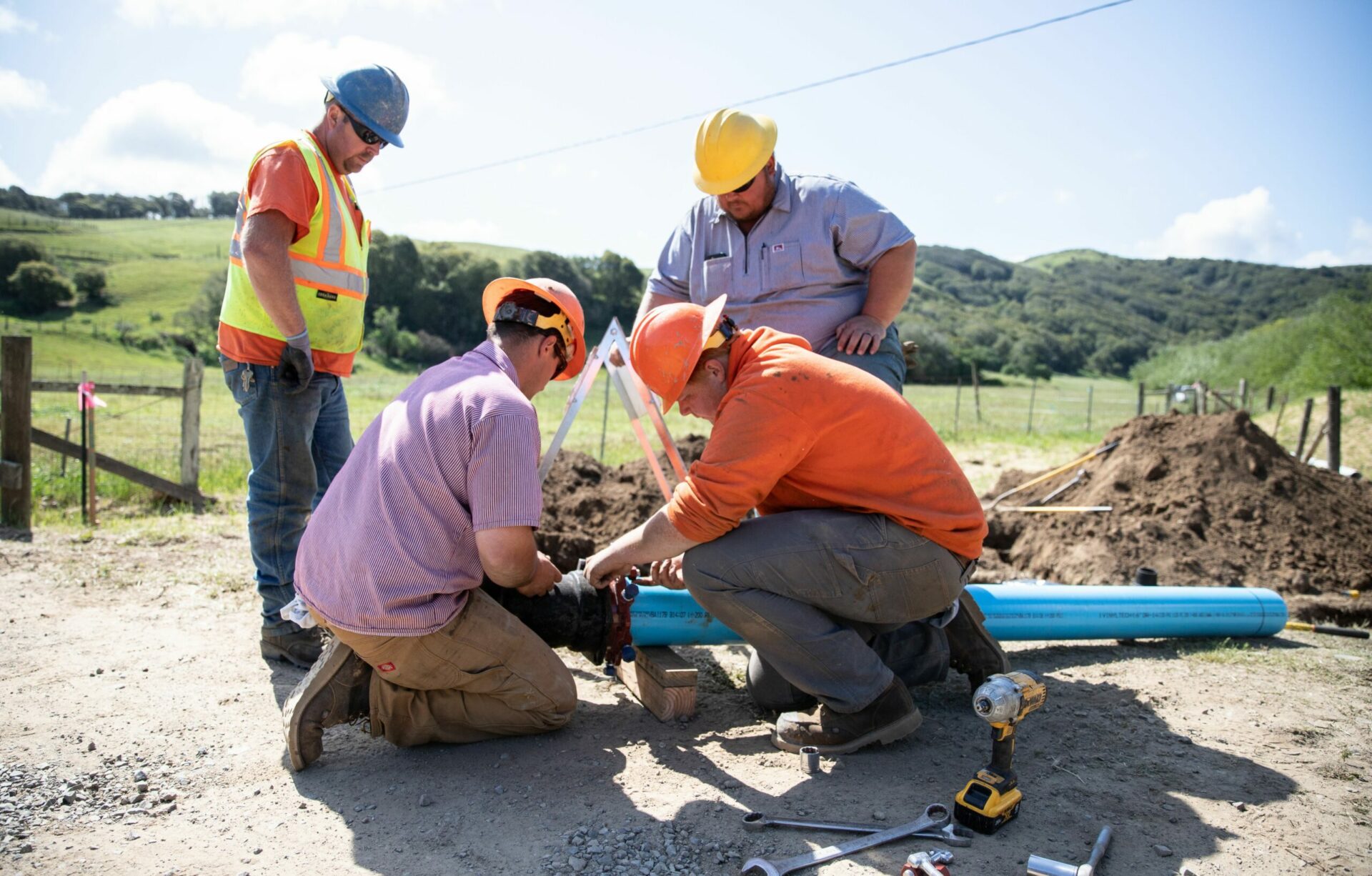The stately Napa winery of Far Niente and the wastewater treatment plant for the small town of Healdsburg have more than winecountry surroundings in common. Each facility typically produces enough power on-site to run all their operations, and then some. Both hold national records. And the inviting irrigation pond tucked amidst the vineyards at Far Niente bears a striking resemblance to the ponds full of treated sewage-water in Healdsburg.
It’s all because of their floating solar panels.
“Floatavoltaics” (a portmanteau of floating photovoltaics, or solar panels) remain almost unheard of in the United States. But they’ve gained traction in other parts of the world, and could generate a staggering estimate of 10% of U.S. power needs if installed on even a quarter of our constructed water facilities (i.e. filled quarries, reservoirs, and aqueducts). Just as important for water-strained regions, they shield the surface they’re floating on from the sun. One study found that covering California’s network of aqueducts with solar would prevent 29,000 gallons of water from evaporating off of every kilometer of canal, every day.
The exact designs vary, but the basic idea is simple: put solar panels on top of water instead of land. It’s pricier to float solar panels than to mount them on the ground or rooftops, but the perks—some obvious, some hidden—could soon make floating solar a more popular option in parched, expensive parts of the U.S., like California.
When winemaker Greg Allen began investigating how to create clean power onsite at the Far Niente winery in the early 2000s, the winery was spending about $125,000 on electric bills each year. But the refurbished 19th century building was not well suited for rooftop solar: the roof sprouts odd angles and charmingly curved divots galore. Powering all the cooling, processing, and lighting around the winery would have required two acres of land just for solar panels with the technology of the day.
“Do you want to trade off cabernet for electricity?” Allen responds with a chuckle when I ask why the winery considered building a floating solar array in the first place. Instead of sacrificing valuable vineyard land, the winery took a gamble and installed 994 solar panels on their irrigation pond in 2008. It was the first non-experimental floating solar array in the nation, and probably in the world.
“We saw an opportunity to use this land [the pond is on] twice,” Allen adds.
“Would you trade cabernet [land] for electricity?”
While Far Niente’s driving motivation to “floatavoltaics” was producing their own clean power, the Healdsburg wastewater treatment facility stumbled upon floating solar as a solution to a practical problem: pond scum. Clean water can’t sit under the sun in open ponds for long before it’s choked with algae. Although the treated wastewater is safe for irrigation, convincing local vineyards to overcome the “ick” factor and use the reclaimed water instead of drawing from their wells was already tricky enough without gunk in the water.
In early 2021, several years after the treatment facility began exploring inexpensive ways to shade their ponds, the largest floating solar project in the nation began producing power there. Terry Crowley, Healdsburg’s utility director, said the shift in water quality was marked.
“The operators, they’ll tell me they notice a difference in water quality from this year to last because of the shading,” he explains. “There is still some algae growth, but it’s much, much less. It’s hard to put a price to, but it’s important.”
The day I visited Healdsburg, a town of less than 12,000 people, one of the two football field-sized treated wastewater ponds lay empty thanks to the ongoing drought. In the dry pond, the solar array rested on the ground, summer heat distorting the air above as though the panels were baking on a grill. Draining ponds for drought or maintenance is standard, Crowley said, so each module that made up the massive solar flotilla was designed to be easily moved around without interfering with power generation.
On the other pond, the pontoons of panels floating at the surface were adorned with a smattering of white goose excrement along one edge, while mallard ducklings gamboled under the floats across the pond’s long surface. The panels themselves can perform better when kept cool by the water, although exactly how much better is unclear.
The solar panels installed on both ponds, explained Crowley, produce far more power than the treatment facility needs to run. The leftover energy is sent to the rest of Healdsburg, and can provide 8% of the city’s total power on an average day (and up to 16% under the best conditions). The flood of cheap electricity entirely offset the cost of the solar array’s materials, the engineering, and the installation; city residents didn’t see their electric bills budge a cent from the pricey project.
As Crowley and I ambled around the perimeter of the ponds, I gently probed for what the catch was. The benefits seemed bountiful and obvious: lots of independent, carbon free, local power that didn’t compete with housing or agriculture for precious space. Better water quality. More water left for thirsty gardens or vineyards, and less evaporated by the sun baking the dry golden hills that surrounded us.
Even the unexpected surprises that arose were pleasant ones, for both Far Niente and Healdsburg. In the early summer months, Crowley realized that Healdsburg’s floating solar panels, which are angled to face east and west rather than south as is typical in North America, were generating much more power than expected in the late afternoon—the exact time when hungry air conditioners often force the city to buy more power from PG&E. At Far Niente, Allen had misgivings about whether some engineering aspects of the project would work. But thirteen years later, to his delight, the floating array runs just as well as the adjacent panels on land.
So why isn’t floating solar a hotter topic in California? The price tag is an obvious answer, but perhaps a deceptive one as well. As recently as a few years ago, solar was still viewed as an expensive investment relative to electricity from fossil fuels; however, solar power is now one of the cheapest energy options in many sunny areas. And the extra bonuses that come from floating solar—like saving water, or improving water quality, or the prospect of panels making even more energy if they’re naturally kept cooler than their rooftop counterparts—are poorly quantified and rarely, if ever, added onto the budget sheet.
Still, floating solar can be pricier than solar mounted on land (by roughly 40%). It typically pays for itself within several years, but bankrolling the upfront cost can be daunting: both Far Niente and the city of Healdsburg benefitted from long term financing and ownership schemes that removed most of the direct financial burden and risk from their shoulders.
The other obstacle holding back floating solar may simply be unfamiliarity with the technology. The Bay Area, where both Far Niente and Healdsburg are located, is known as much for its sky-high cost of living and drought as for a culture bold innovation and embracing new ideas; it may be poised to be at the vanguard for floating solar.
On my way out of Healdsburg, just a mile down the road from the nation’s largest floating solar installation, I pulled off at one of the roadside tanks where residents could fill jugs of treated wastewater for their drought-stricken lawns and non-edible gardens. While I fumbled with my smartphone map, a large city truck bearing a water tank pulled up. As the driver connected a massive hose between his truck’s tank and the one on the side of the road, I introduced myself, and asked about his work.
The driver, named Pete, said that people were grateful when he brought the free water by their houses to replenish their personal holding tanks each week. Pete, who normally drives a dump truck, said he had never heard of floating solar panels. I asked whether he personally took advantage of the city’s treated wastewater to irrigate his own yard.
He shook his head. “Nah, there’s plenty of water. I live right by the river.”






